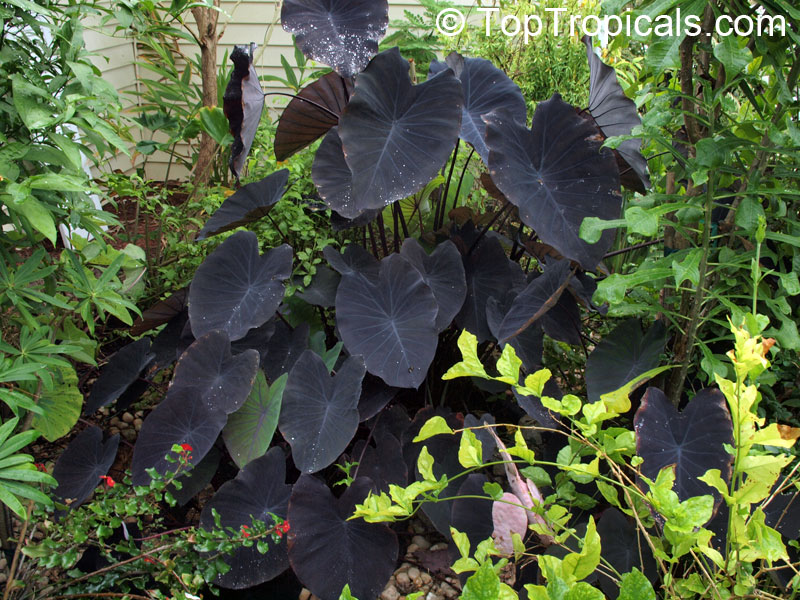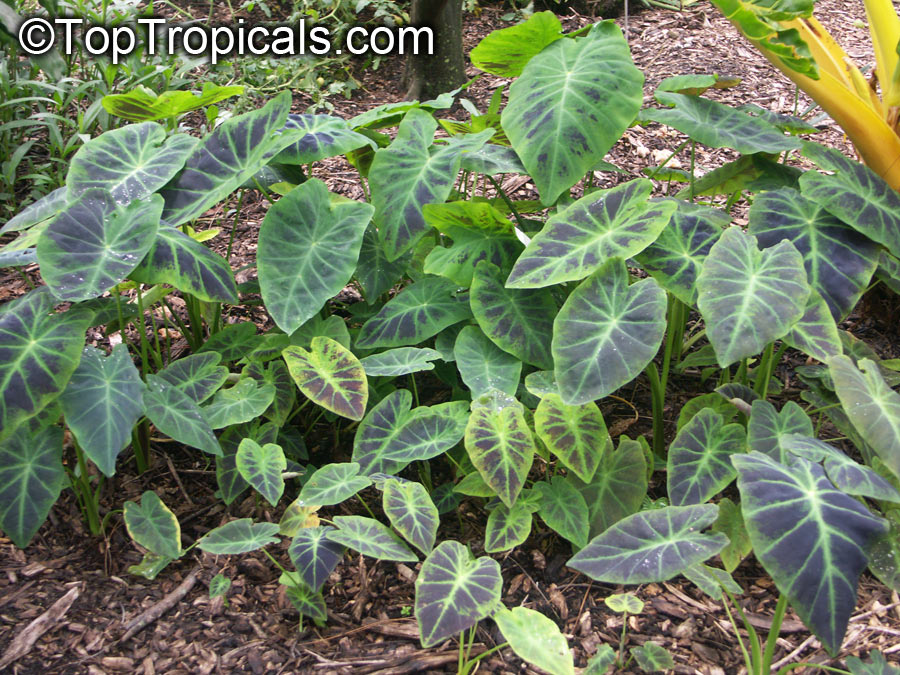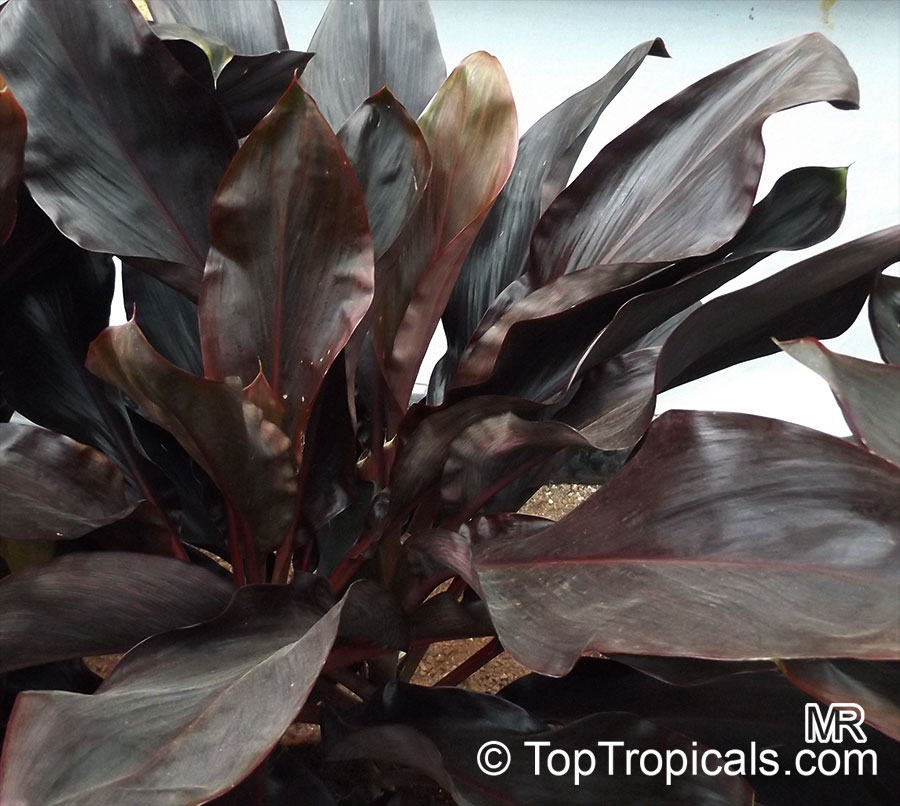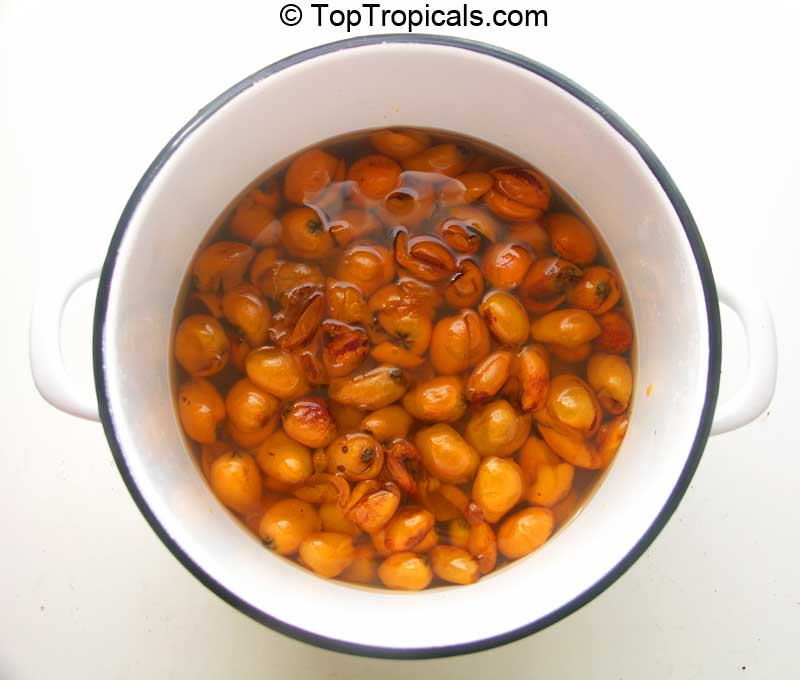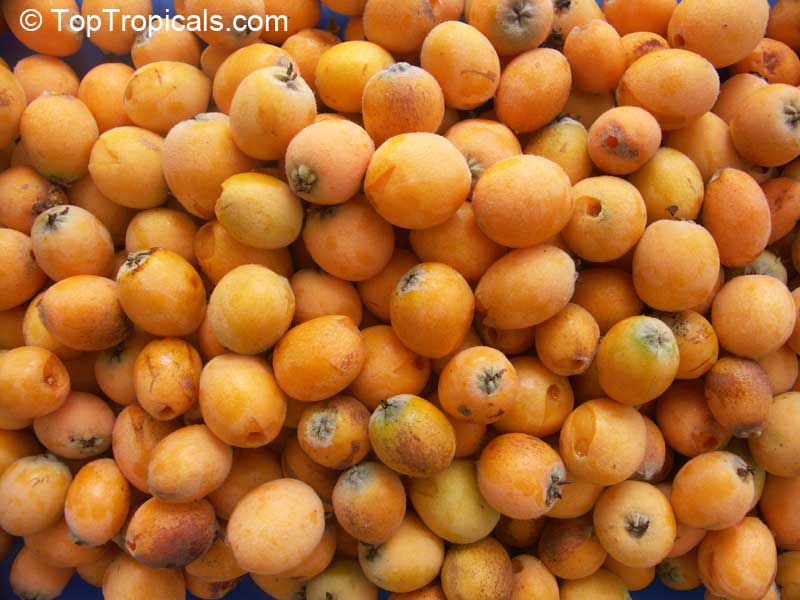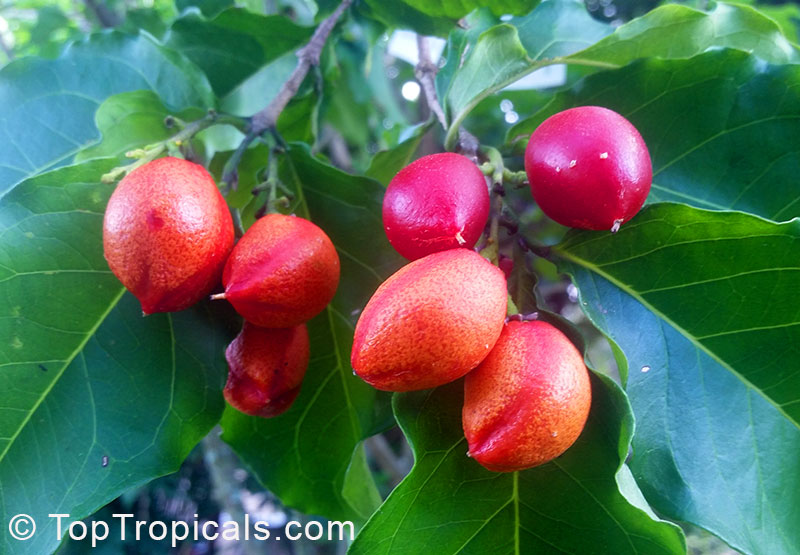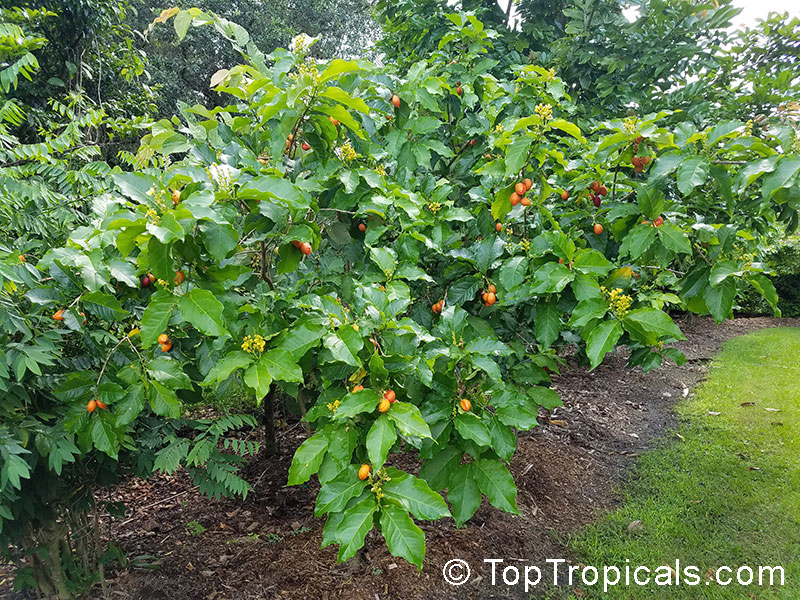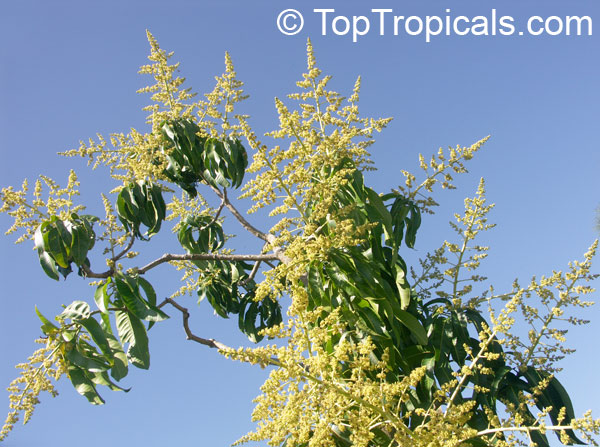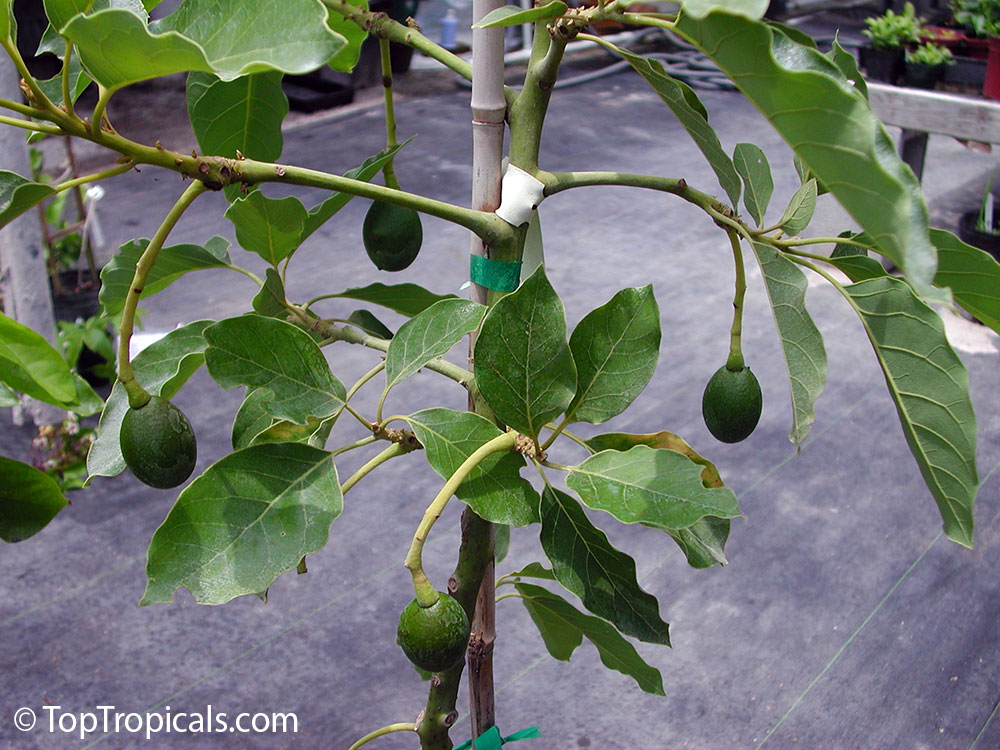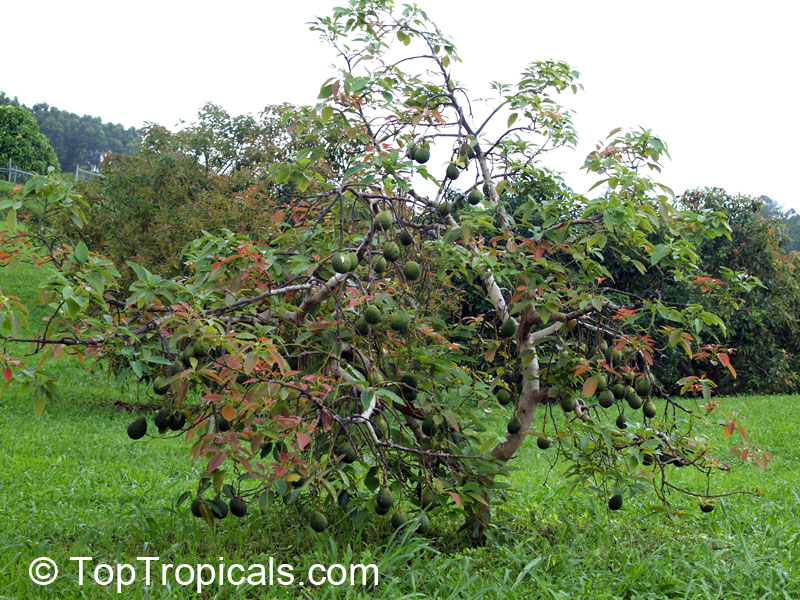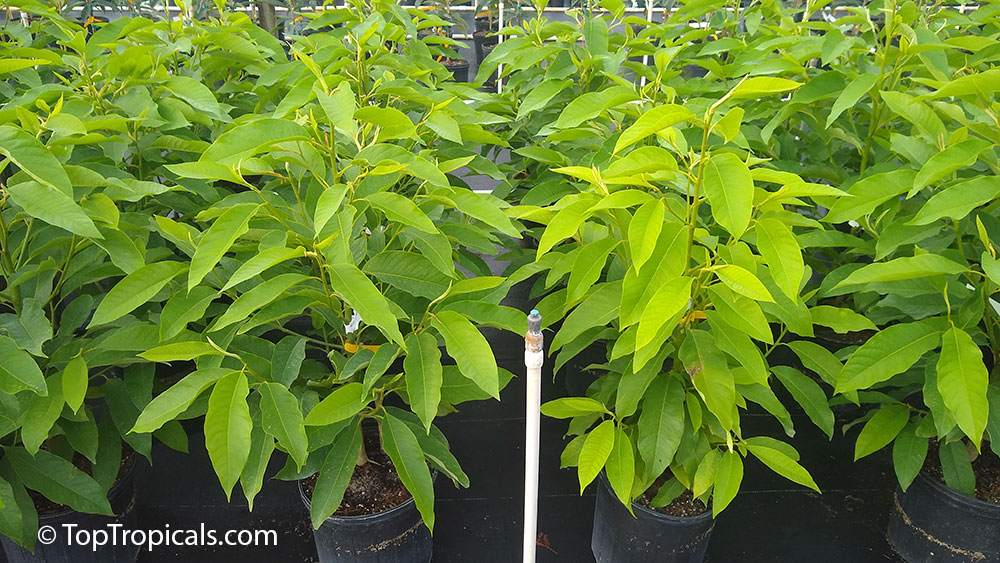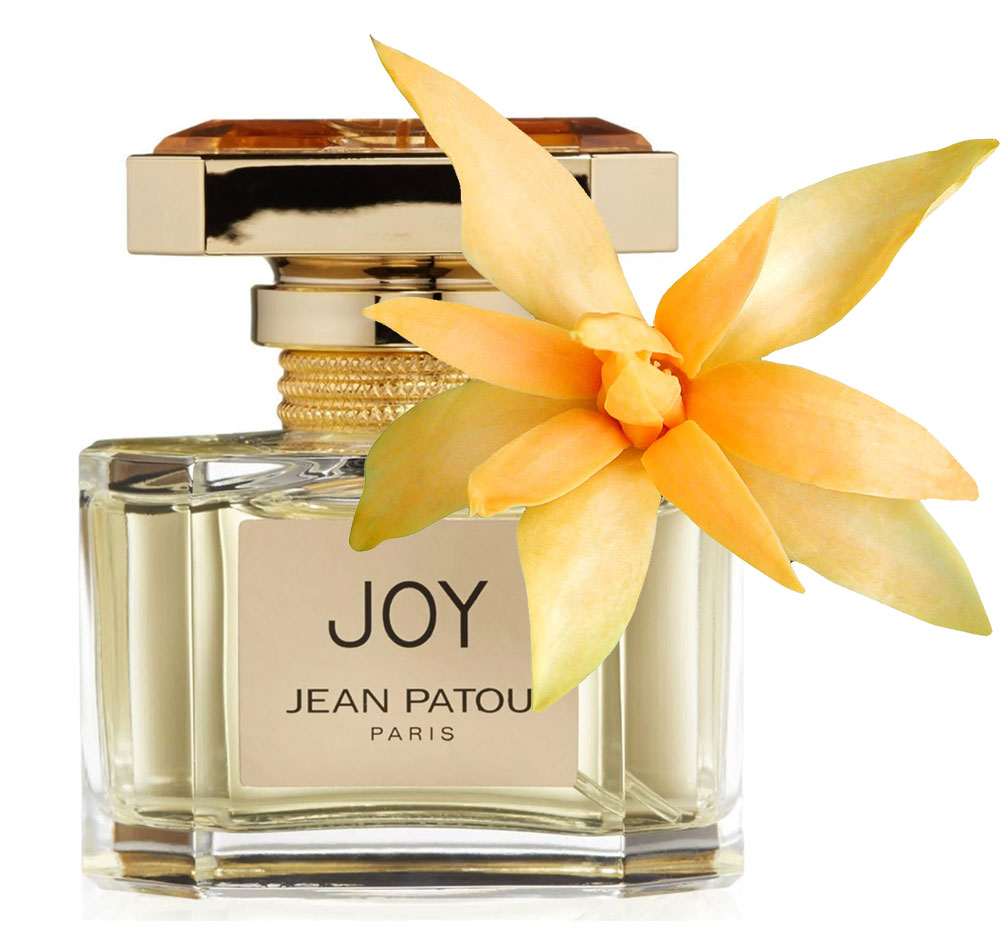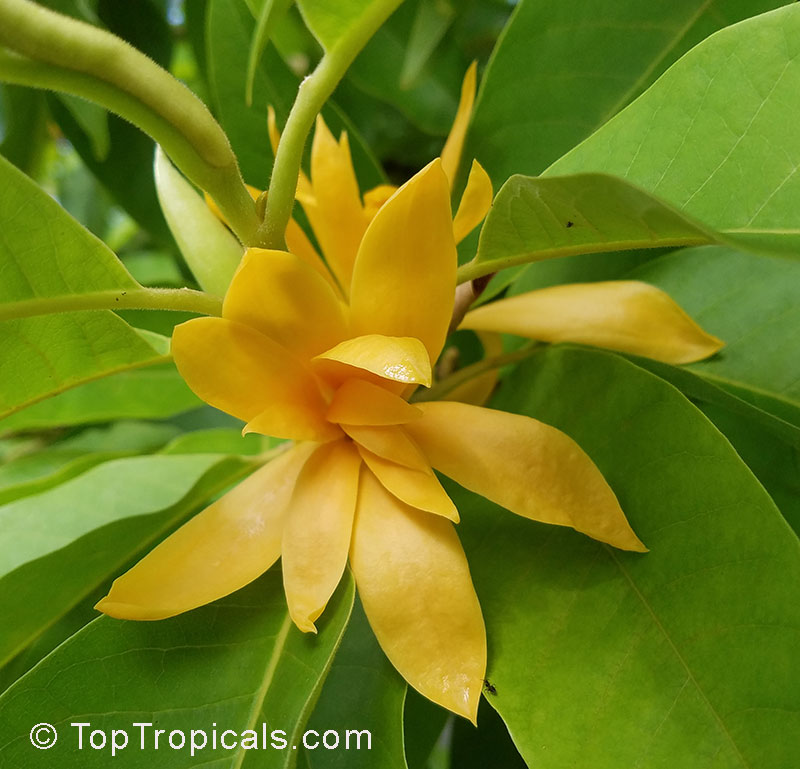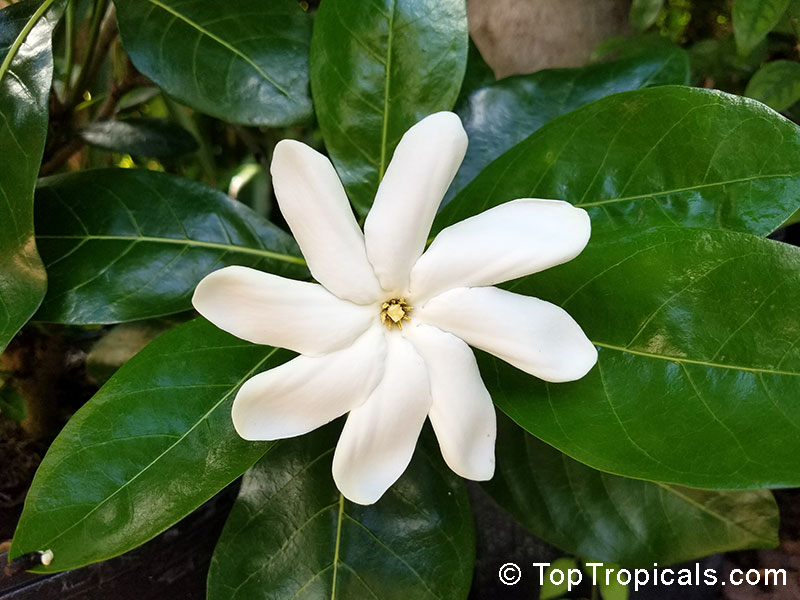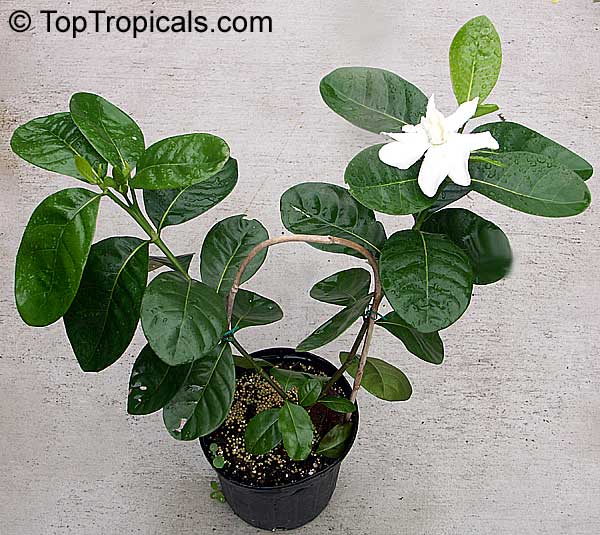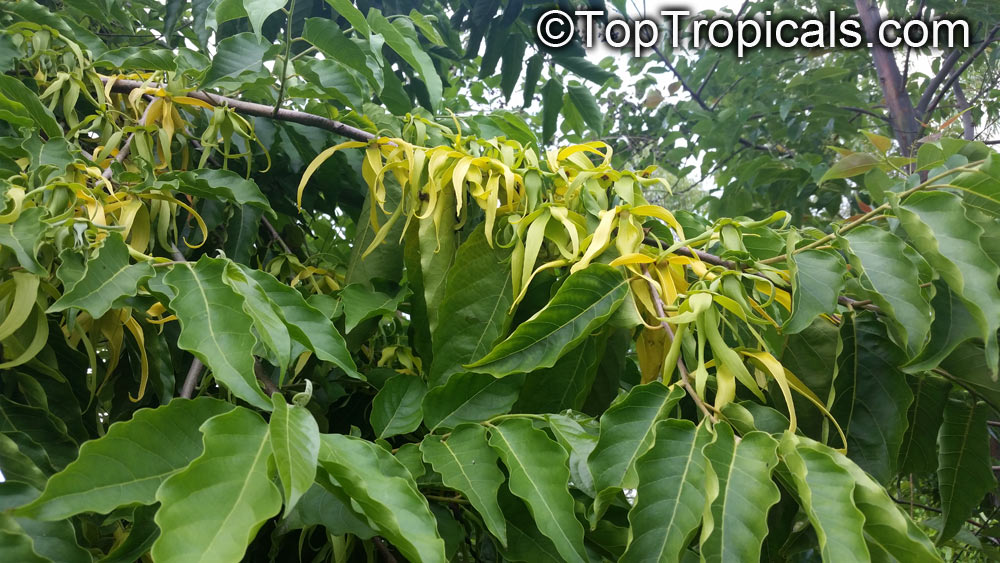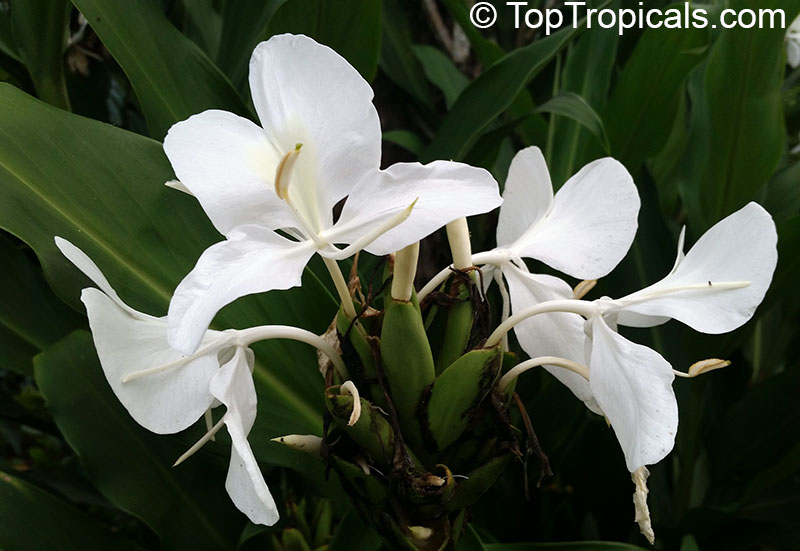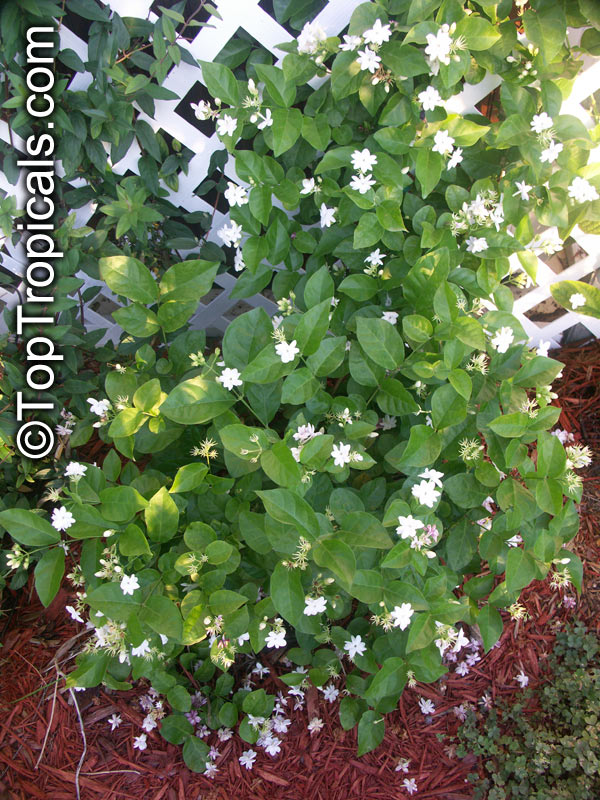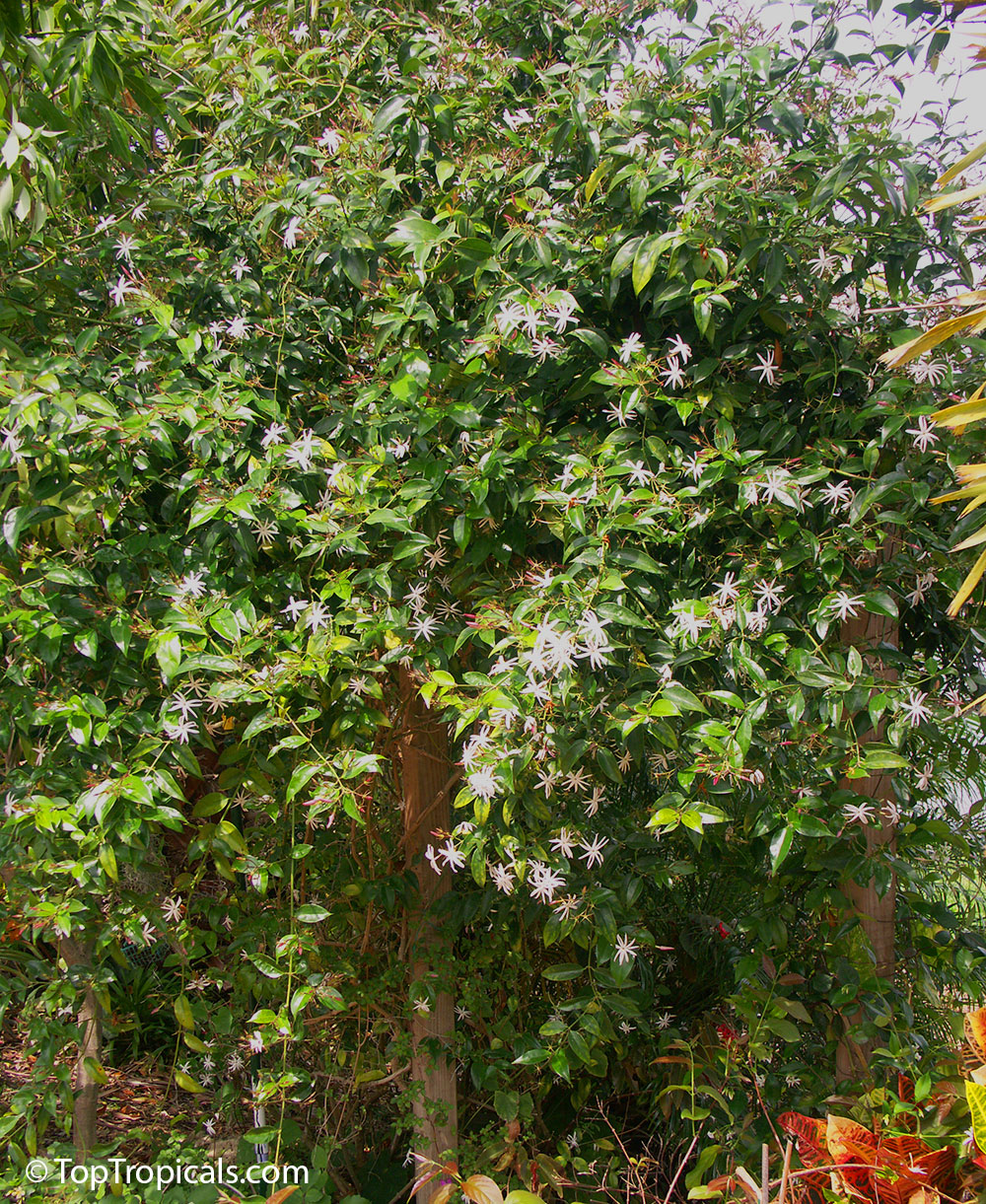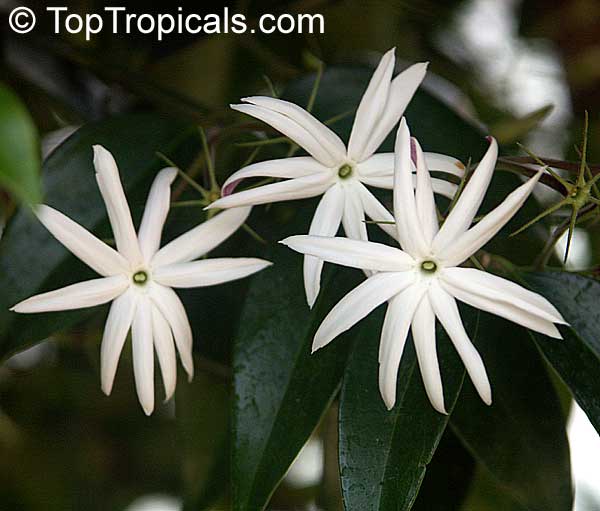Date:
Black Magic of Colocasias
Spectacular unusual plants
Q: I need something unusual to plant next to a small pond at my front yard. It is full sun location. I need a plant that is not too messy and doesn't require much maintenance. Preferably without flowers, so they don't drop into the water, and not too tall. Any suggestions?
A: Your ideal solution is - colorful Colocasia hybrids with
spectacular large leaves. Our favorite is variety Black Magic - it creates a magic tropical atmosphere. The color of the
leaves in full sun is dark purple, almost black, and the brighter the light,
the deeper the color.
Light colored varieties - Royal Hawaiian Maui Sunrise, with bright sunny stripes, or Illustris, in case you want to create a bright, mixed-color border
around your pond. Colocasias are perfect plants for perimeter borders, and
naturally are marginal plants around lakes and along river banks.
Photo above: for enhanced effect of your Black Magic Colocasias, use Black Magic Ti Leaf for the background planting... Cordyline fruticosa Black Magic - Hawaiian Good Luck Ti Leaf.
